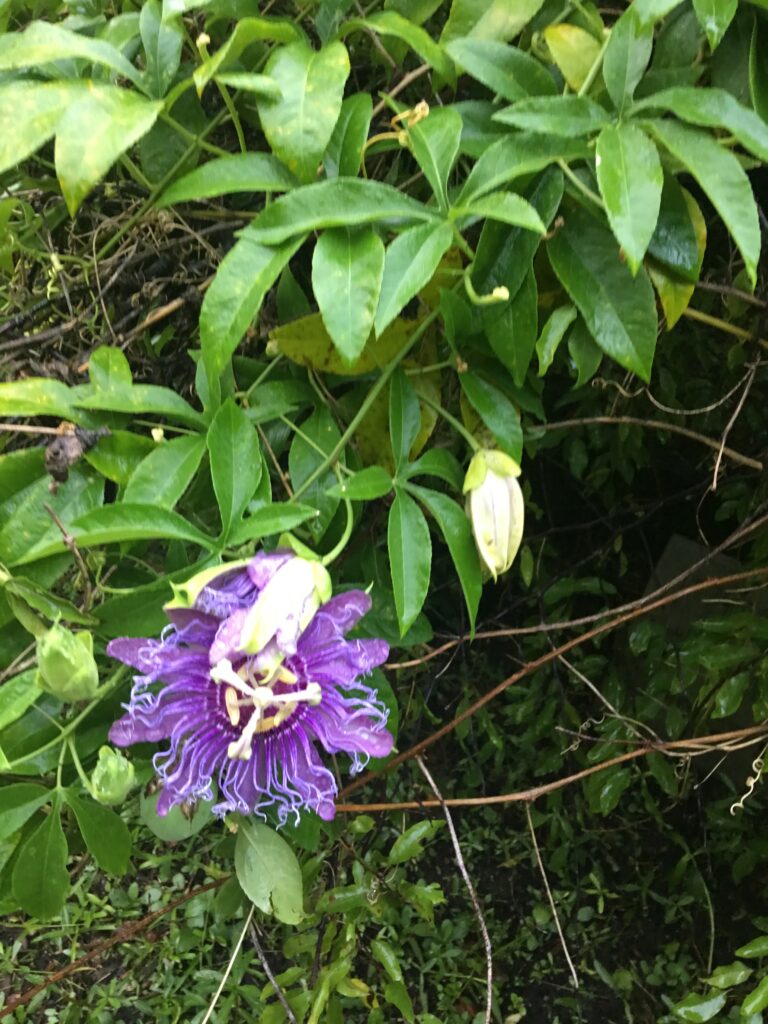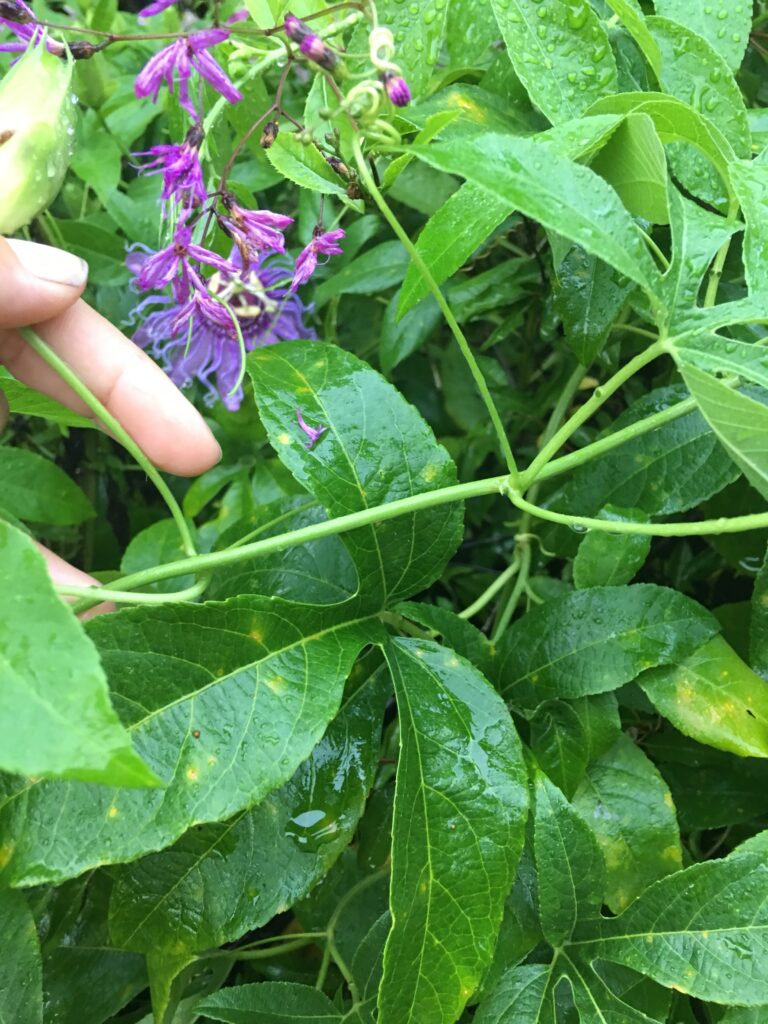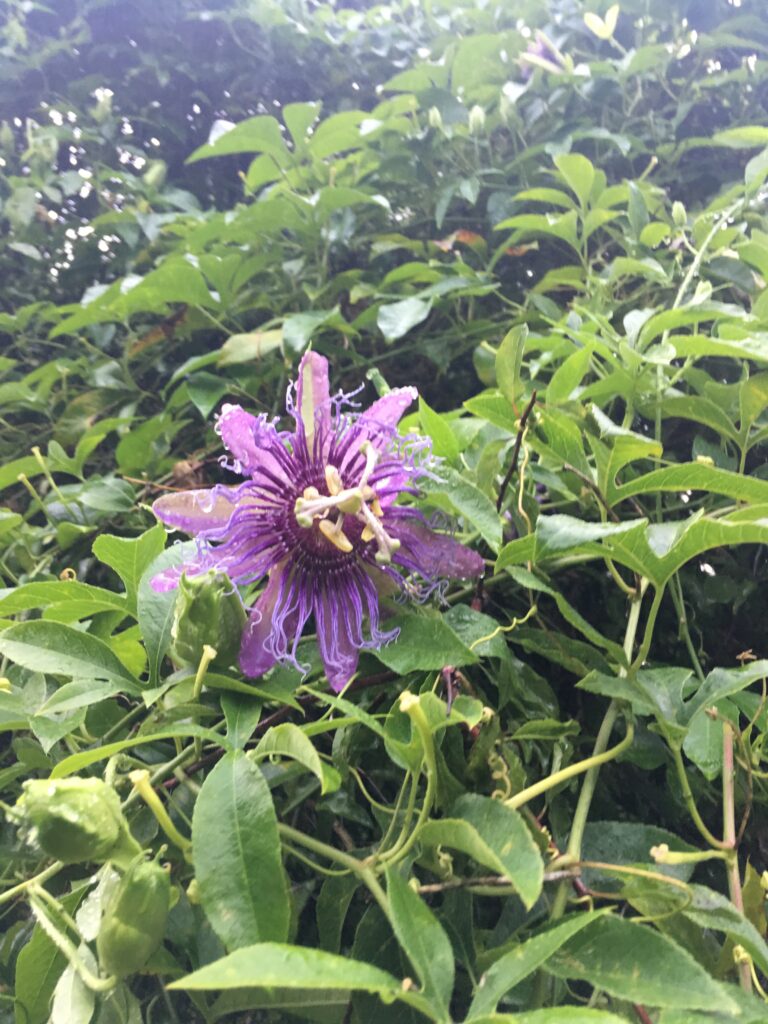‘Incense’ Passion Flower Vine Passiflora incarnata x cincinnata in the NE Florida Landscape









Passiflora incense incarnata x cincinnata… Whats in a name?
( Pass-siff-FLOR-ruh in -kar-NAY-tuh x kin-ki-na-ta) Passiflora means ‘passion flower’ and incarnata means ‘in the flesh’ cincinnata is from the Latin cincinnatus, In Classical Latin, the word cincinnatus means “the curly haired”. It was the cognomen ( a third personal name given to an ancient Roman citizen, typically passed down from father to son) of Lucius Quinctius Cincinnatus, a Roman general and statesman who lived from around 519–439 BC. Let me guess.. he had a head full of beautifully curly hair? It is, in this plant referring to this plants beautifully curly filaments that are the star of the show on this parent plant and on its new hybrid ‘Incese’! And of coarse last but not least ‘Incense’ because this flower has a wonderful fragrance.
Not that that will ever get anywhere, sometimes its just fun to see the breakdown 🙂
Passionflower vines are short lived perennials that you can expect to live a few seasons in the landscape.
Origins of ‘Incense’ Purple Passion Flower Vine / Passiflora incarnata x cincinnata:
The Passiflora genus is considered pan-tropical, it is distributed among the tropical regions of the planet and consists of more than 500 species with most found in South America, eastern Asia, southern Asia, and New Guinea and some found in our very own SE United States like our native passiflora incarnata. They are members of the family passifloraceae and may be a vine, shrub, or herbaceous plant.
American plantsman Dr. Robert Knight preserved the genetic traits he desired of the parent plant Passiflora cincinnata (those beautiful dark curly filaments) in a plant that would withstand our climates winter temperatures by breeding it with the Florida native Maypop passiflora incarnata, and I must say I can see why he went to the trouble to do it. These flowers are spectacular!
Blooms and Fruit of ‘Incense’ Purple Passion Flower Vine / Passiflora incarnata x cincinnata:
Beautiful blooms very similar to incarnata except larger with long dark curly filaments and darker purple sepals and petals. The blooms are really quite vibrant and eye catching as well as wonderfully fragrant. Blooms are around 3-5 inches wide and occur in NE Florida area in spring with edible fruits occurring midsummer. The purple flowers are a major attraction of butterflies and other pollinators to the garden. the flowers are perfect or complete, containing both female and male parts, so they are self pollinating.
Fruits form green and then age to a soft yellow color. They are oval in shape and are produced abundantly on vines along with the flowers. The fruits are edible but a bit tart and contains few seeds.
https://www.passionflow.co.uk/passiflora-incense
Foliage and Mature Size of the ‘Incense’ Purple Passion Flower Vine in NE Florida Landscapes:
Foliage more than flowers may be the determining ID factor as this plant is widely distributed now and some rosses with it and incarnata have been discovered. The leaves on Incense are more deeply lobed than that of incarnata and will have 5 lobed leaves on mature plants instead of the three that an incarnata will have on its mature leaves. Immature and juvenile leaves may be simple or have less lobes. Another distinguishing factor of Incense from the Native incarnata is the placement on the stem of the extrafloral nectary glands (petiole gland) on incarnata will almost always be right up against the leaf on the stem where on Incense that extrafloral nectary gland will be halfway up the stem! This can be an important distinction when a plant is young and may not have any mature leaves on it yet in its first year.
The vines on Incense are prolific and can reach to 10-30 ft long. When planting on a trellis remember to wind your vines sideways to get the most blooms and fullness on your trellis, it will go up all on its own but you will need to force it sideways and redirect growth back to the trellis that wants to stray to nearby shrubs trees trees or buildings as they grow aggressively during summertime when the temperatures and rainfall are high.
Exposure for ‘Incense’ Purple Passion Flower Vine / Passiflora incarnata x cincinnata in NE Florida Landscapes:
Plant these pollinator paradises in a full sun or a partial shade location. Morning shade with all afternoon sun is also ideal, this is a sun loving, heat loving vine! Although the plant will still thrive in shadier areas they will produce more blooms with sunnier areas.
Soil Preference for ‘Incense’ Purple Passion Flower Vine / Passiflora incarnata x cincinnata in NE Florida Landscapes:
Passion flowers are tolerant of a wide range of soils and conditions. Passiflora incarnata x cinncinnata will prefer moist but well drained soils and are right at home in NE Floridas sandy soil gardens without needing heavy amendments of compost or manures at the time of planting. Just Plant them and give them a nice thick mulch layer to regulate the soil moisture!
Want to see more Passionflower vines for NE Florida landscapes? Links below!
Blue Passion Flower Vine / Passiflora caerulea
Passion Flower Giant Grandilla / passiflora quadralangularis

